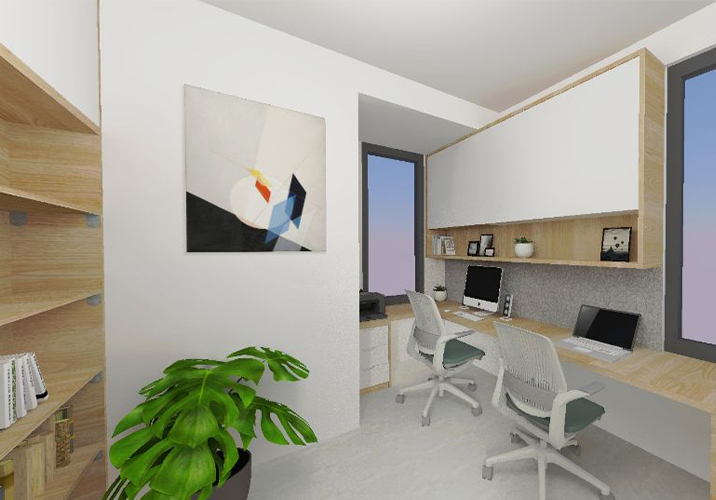A beautiful bathroom is your private sanctuary, a place for long, relaxing baths and pampering. It may be one of the smallest rooms in the house but it’s one with a lot of components and should be one of the most considered spaces when renovating. If you’ve decided to update your bathroom, some careful planning can go a long way to ensuring your end result is what you’ve been dreaming of.
Here are some things to consider when planning your bathroom renovation.
What do you want to achieve?
Are you looking to create a luxurious space that feels like an exclusive spa, or do you need a practical bathroom that will meet the needs of a family of 5? It’s important to start your planning process with your goals in mind to ensure you and your family’s wants and needs are met. Who will be using this bathroom and will their needs be met? Think about what are absolute must haves and what you’re prepared to compromise on. Write a list of what you don’t like about your current bathroom so that you can rectify these problems in the next.

Budget
Knowing how much you have to spend is critical when planning a renovation. Can you afford a total remodel or do you just want to change the vanity and fixtures? Having a budget will make it much easier to determine your parameters and will ensure you get maximum bang for your buck. The size of the space, the materials you choose and whether you’re going to be doing any of the work yourself will affect the cost of a renovation.
Get inspired
Look for design inspiration in magazines, online or in showrooms. Keep your goals in mind, along with the rest of your home – the bathroom should ideally continue the flow of the décor. You don’t want your bathroom to quickly date so be wary of trends. Do your homework and find classic, timeless designs you’ll love for a long time to come. Collate a collection of inspiring images, get samples and actually see the products where possible instead of just looking online. Utilise visual rendering technology where possible to give you a better idea of what your finished bathroom will look like.
Design & layout
In a space as small as a bathroom, design and layout is critical to ensure functionality and usability. You don’t want to end up with your knees hitting the edge of the bath every time you use the toilet or a tiny shower that you’re disappointed with. Get familiar with the space you have to work with and once you have a preliminary design, ensure it’s to scale.
There are lots of space saving ideas for a bathroom. Things like corner vanity units can really open up your space or having a sliding door instead of a traditional hinged door can work wonders.
Determine the focal point of the bathroom when you enter the room and be sure to plan for quality materials and fixtures in this area. The primary fixtures are the toilet, sink, bathtub and/or shower stall. Think about clearances, such as the shower door hitting the main door. If you are laying in the tub, do you want to be staring at the toilet? Also, where are the utilities such as water, sewer and electricity located? The less you have to move existing utilities or run new ones, the more economical the bathroom will be.
Some things other questions to consider:
- Is there adequate ventilation?
- Do I want a wet room or a shower screen?
- Is the shower large enough?
- Are there enough windows and do they need to be moved?
- Is there enough storage space?
- Is the bath large enough?
- Is there enough natural light?
- Are there enough power outlets?
- Is there enough benchtop space?
- What will the height of the sink be if it’s a bowl sink?
- Is there enough room for the door to open?

Lighting
Lighting choice is critical in a bathroom. You need to have different lighting for different functions – a bright light for applying make-up and soft, muted lighting for a luxuriously long soak in the bath. Be sure to include layers of decorative, task, accent and ambient lighting to achieve a beautiful yet practical design that will meet all of your needs.
Timing
If you are project managing, plan your trades and services in the correct order to avoid costly mistakes. If you’re doing a lot of the work yourself, make sure you’ve done your research. The more mistakes, the longer it takes, and the longer you’ll be without a bathroom and using the gym showers.
Have everything you need
Before you take to your old bathroom with a sledgehammer, make sure you have everything you need on hand. It can be a long wait for those porcelain tiles from Morocco to arrive when you don’t have a usable bathroom. Check that all of your materials have arrived undamaged so you don’t hold up progress having to get replacement materials at the last minute.
Spend money wisely
Assess what can be saved from your existing bathroom. If you can work with some of the things you’ve already got you’re going to save a considerable amount of money. Tiles can be re-grouted, baths can be resurfaced and walls can be painted, there are lots of things you can do to refresh your space without doing a total demolition job. Just changing the vanity unit or the fixtures and fittings can really transform a bathroom.
Don’t be tempted to buy the cheapest options available for everything. Buy quality where you can and splurge on a few key pieces that will really set the tone of the space and add to its luxury.
Think about whether you absolutely need to move the location of the shower, toilet, bath and vanity units – doing so may mean you need to need to move the plumbing which can be costly. Sometimes it’s absolutely worth doing but you need to weigh up. Perhaps you could upgrade the toilet instead of moving it, or change the old shower screen to a sliding screen. There are plenty of ways to improve your space without spending a fortune. Be smart with your budget and it will stretch a whole lot further.
Contact local bathroom renovators
Storage
Clutter isn’t appealing in a bathroom and can quickly ruin your carefully planned aesthetic. Those tacky plastic hangers for shampoo and conditioner can be avoided if you plan to have a recessed area built in to your shower. Choose your vanity unit wisely and in accordance with your storage needs. Whilst pedestal basins may look fantastic, they aren’t exactly practical if you’re short on storage space.
Think about what you keep in your bathroom now and plan for plenty of space, especially if the bathroom is being used by multiple people. Consider options such as recessed cabinetry, vanities, medicine cabinets, over the toilet storage, and eye level shelving to keep your bathroom looking organised and provide a place for everything.
Do you need to have plans drawn up or council approval?
Depending on the extent of your renovation, you may need to have plans drawn up or gain local council approval. Most councils allow for minor changes that don’t alter the structure or services such as plumbing, drainage and electrical, however it is always best to check what your local government’s policies are.

















